This fine gunning skiff from the bays and coastal lagoons of southern New Jersey might have evolved from the lapstrake beach skiffs that worked the exposed Atlantic beaches of the Garden State. Similarities of line and construction between the beach skiffs and the melonseeds seem too powerful to ignore.The melonseed’s dates are not certain, and some debate swirls around their history (WoodenBoat No. 180, page 50). Howard Chapelle (American Small Sailing Craft, W.W. Norton, 1951) mentions 1882 as the earliest written reference to the boats. They certainly coexisted for a time with the more famous Barnegat Bay sneakbox, a much easier boat to build. Most observers seem to agree that the melonseed came about in a search for a gunning skiff that could work in more open waters.The sneakbox, which curiously does resemble a seed that we might find in a melon, works well in marshes and protected waters. In rough water, the sneakbox behaves as we might expect a seed from a melon to behave: it stuffs its low teaspoon-shaped snout into the first appropriately steep wave and submerges. If we clamp an outboard motor to a board bolted through a sneakbox’s transom, the little sliver of a boat will point its bow to the sky and pound our kidneys into submission.
Join The Conversation
We welcome your comments about this article. To include a photo with your remarks, click Choose File below the Comment box.


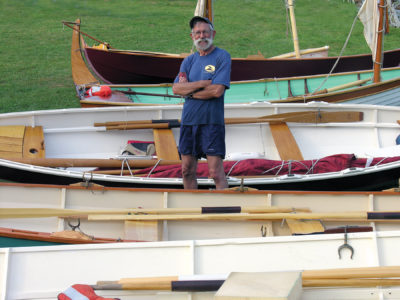
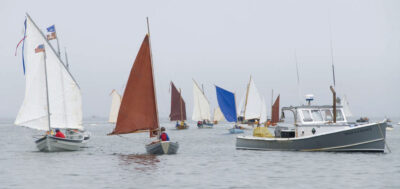
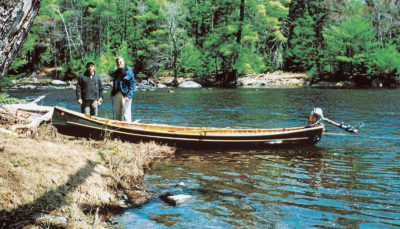
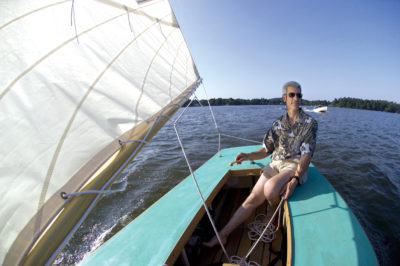
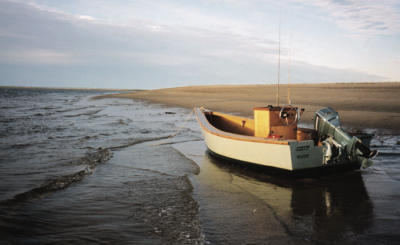
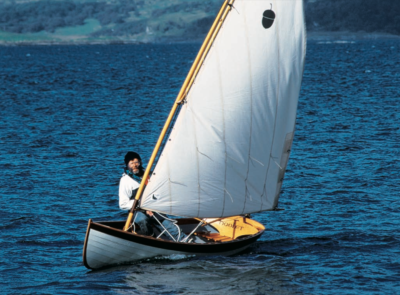
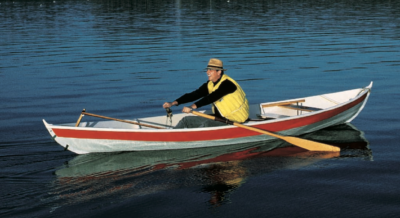
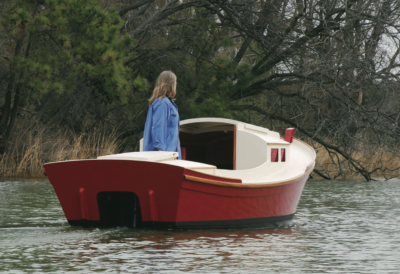
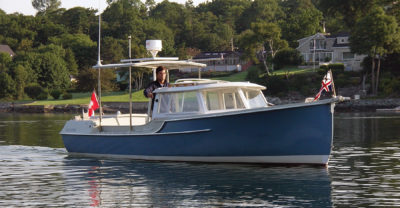
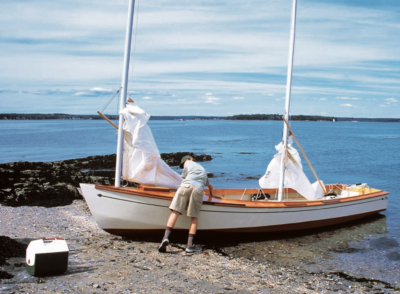


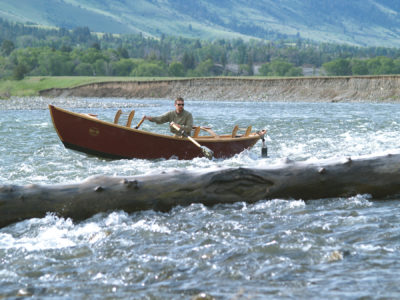
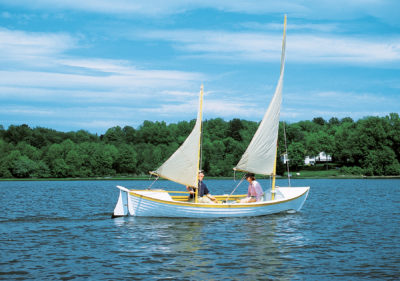

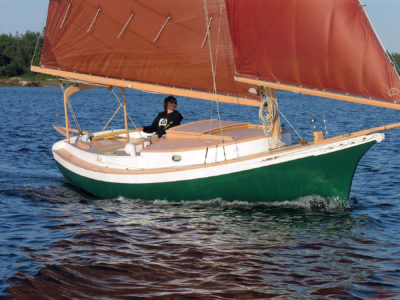
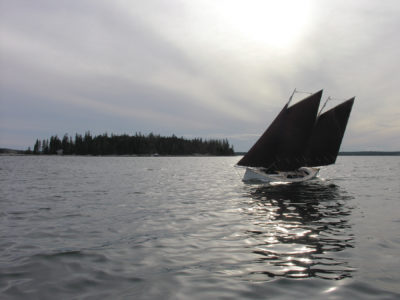
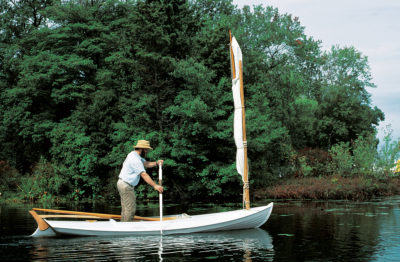
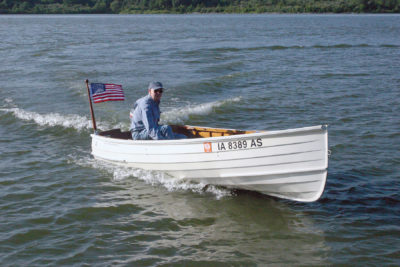
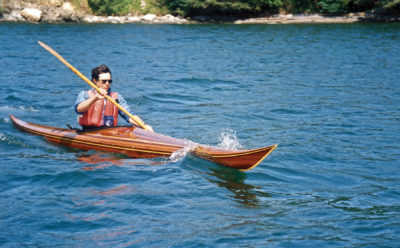
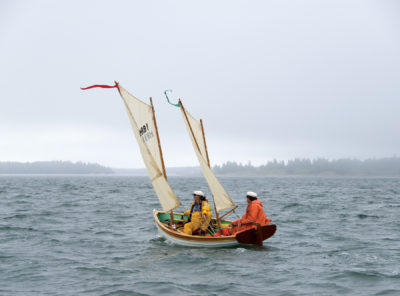
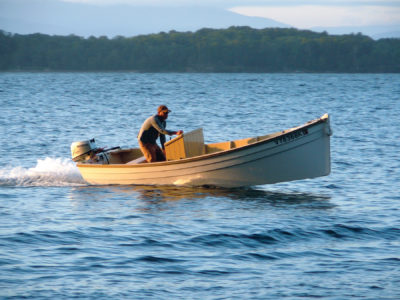
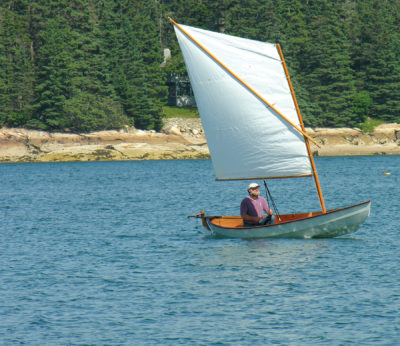
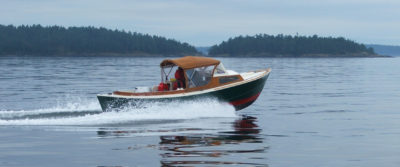


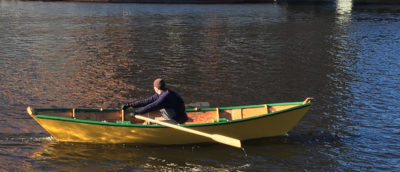
Today’s Small Boats Mag email got me reminiscing about my melonseed. PATIENCE was built by Alex Hadden from Chapelle’s plans which he obtained from the Smithsonian. I kept track of her progress on this webpage which shows her construction. What a great boat. She is the epitome of what Small Boats Mag is all about.
Walt Allan
P.S. I sold her this past summer as jumping about in her got hard for my 77 year-old body.
Great boats! It will 7 years now sailing my Barto 16, RIVUS. It’s a joy to sail, fast. stable and not bad to look at. There are a few dozen more ‘seeds of various designs listed here.
Same reason I sold my Mark Barto Melonseed, built by Howard Katz of Arlington, Virginia, in my early 80s. Beautiful boat. Sold to a gentleman on Cape Cod some years ago.
First one I saw was one built by Joe Liener in the late 1940s to the Chapelle lines. I know of only two other sets taken off old boats. Joe planked his in aircraft plywood as he had ready access to it, working in the small boat shop of the Philadelphia Naval Yard, a shop he would eventually run. The detailing on his ‘seed is worth a study, things like a way of handling the transom as it extends above the aft deck that allowed a small outboard to be used. Joe used his boat in the South Jersey marshes, carrying it in the back of one of the classic big American station wagons.
His boat, I think, is directly responsible for the revival of interest, as several apprentices saw and sailed it in 1976, then went on to build them, which, in turn, let others see them.
As far as I know, only three sets of plans survived from the working days: Chapelle’s, one drawn by Wayne Yarnell from a 16 footer, and one measured by Barry Thomas at Mystic. I don’t know of any historic ones in museum collections. I believe that Joe’s is in the Independence Seaport Museum collection.
A slightly different 12′ melon seed, was documented by Geoff Scofield and Mike Alford at the North Carolina Maritime Museum. They built a replica of the boat which was still sailing on one of the lakes in North Carolina in the ’90s. I believe the original boat still exists and may be on exhibit at the Delaware Bay Estuary Center, in Bivalve, New Jersey, or at a recently organized Life Saving Museum near Cape May Courthouse, NJ, where the boat was owned.
Who is Wayne Yarnell and where can the plans for his 16 footer be found? Any other info on it?
In the November 2016 issue the “Seaford Skiff” of Long Island’s Great South Bay was written up. “Skiff” and melonseeds are like sister and brother. Mystic Seaport has a few “skiffs” including my sister’s, named RoRo. The museum also has plans. These are delicious little boats. And they are wonderful training boats for kids (like me, some 60 odd years ago). Mystic also has a replica they built a few years ago in their boat livery. A great way to find out how wonderful both types of boats are. But a wee comment—if you look at the foto with the man on the foredeck next to the mast, imagine that you have tied up to a dock with only room for the bowline. Imagine swinging around the mast to then step on the dock. Imagine doing that after frostbite racing. I do not have to imagine how cold the water is if you don’t make it around.
Enjoy and Merry Christmas to all
The man in the images was me 30 some years ago and I wouldn’t try that trick now at 70 regardless of the melon seed’s stability. Of course the boat is floating next to the shore in 2′ water in a sandy-bottomed lake in New Jersey.
So Roger, you no longer can do the Laser/Finn trick: Lean the boat way over one side then run around the mast on the other?
I’m glad Small Boats has reprinted this article. 1st, in response to Ben picking on Roger for no longer doing the “Laser/Finn trick.. Long before Lasers were ever seen on the Great South Bay a few of the kids graduated to the Finn class and brought the lean the boat trick to the Finns… The aura of Paul Elstrum as the animal sailer attacking the wind and waves around a racecourse was compelling….
2nd.. Mystic Seaport had a special display of some of the boats which were stored away from view and called it-“-If they could talk”–one was supposed to be my sister’s Seaford Skiff.. I drove all the way from the Outer Banks of NC to see it.. My sailing buddy of my youth, Brian Donohue, is a volunteer at Mystic. He told them a person who had actually sailed her would be coming… Imagine our dismay when we found out that they had decided NOT to display the RoRo.. After that disappointment we lifted each others spririts by walking among the boats on display.. We knew the backgrounds behind most of the boats. As we walked and talked we found people starting to follow us as if we were tour guides… .. Hmm?…. I wonder if anyone can match my claim to fame… I was the last to sail a boat donated to Mystic (the RoRo) and also the last to sail another boat donated to another museum….. My uncle donated his W-Cat built by Wilbur Ketchum to the Long Island Maritime Museum. I was the last to sail the Yes Pop….
Marc Bartow built a few and we usually see one at the Chesapeake Bay Small Boat Festival in October (but not this year) When I met him a few years ago, he was living on old Dickerson mid-cockpit that belonged to a Mr. Roberts, who owned the Worton Creek Marina in Chestertown, Maryland.
The boat in the images was begun by Valerie Danforth to the Chapelle lines. Valerie was one of John Gardner’s apprentices at Mystic Seaport and brought the backbone and mold to Philadelphia Maritime Museum (PMM) when she came there to work with me as a boatbuilder at the Museum’s Workshop on the Water. The boat was later finished by Peter Lauser of New Britain, Pennsylvania. The sprit rig was hastily cobbled together using bits and pieces from two 12′ duckboat class sneakboxes. The images were taken by Ben Mendelowitz at the Tuckerton Decoy Festival in about 1982 as part of a portfolio of Delaware Valley/Jersey Shore boats he was putting together for his first Museum exhibition.
I was one of Joe Liener’s “students”, referenced by Ben Fuller, while I worked to build and organize PMM’s Workshop on the Water, beginning in 1978. Sailing the “Seed” was icing on the cake during my many visits to Joe’s home to learn boatbuilding and vernacular New Jersey/ Delaware estuary small boat lore, of which Joe was a Master. The lines of his boat were provided by W.P. Stephens who took them from a half model. According to Joe, Stephens felt that the melon seed was the best boat of its size. While I’ve never made the comparison between the two, Joe believed that the boat he built had less hollow in the fore sections than the Chapelle version, giving it more buoyancy to carry the weight of the rig, and sweeter buttocks for her entry.
The lines of Joe’s boat were taken by Jon Etheredge while he worked with me as Master Boatbuilder at the Workshop on the Water in the 80s. I took those lines, for a 13.6″ boat, with me to North Carolina where I expanded them to make a 15′ version. Joe and I had often looked at the Yarnell 15′ melon seed lines and agreed that she was more catboat and less melon seed because of her fuller lines. I wanted to build a 15′ melon-seed that had the elegant sailing qualities of Joe’s boat. Dave Lucas, boatbuilder of Bradenton, Florida, and I have seen over 22 built to the new lines and I think it has worked.
Roger, did you or John record the little detail on the transom that allowed a small outboard to be fixed to the ‘seed. As I recall, the transom extends above the afterdeck on these in a graceful arc. Joe cut away the forward corner of the transom extension so the top harmonizes with the sheer, but left it proud for a few inches in the center so you had enough meat for the motor, and made the arc of the transom high enough for space to seat the outboard.
I’ll have to look! It’s been so long since I looked at our plans that I can’t remember.